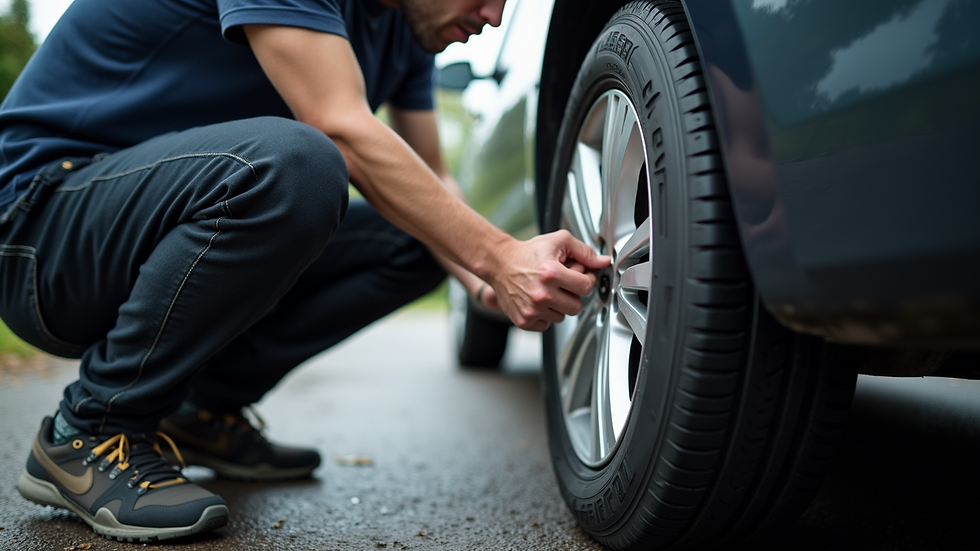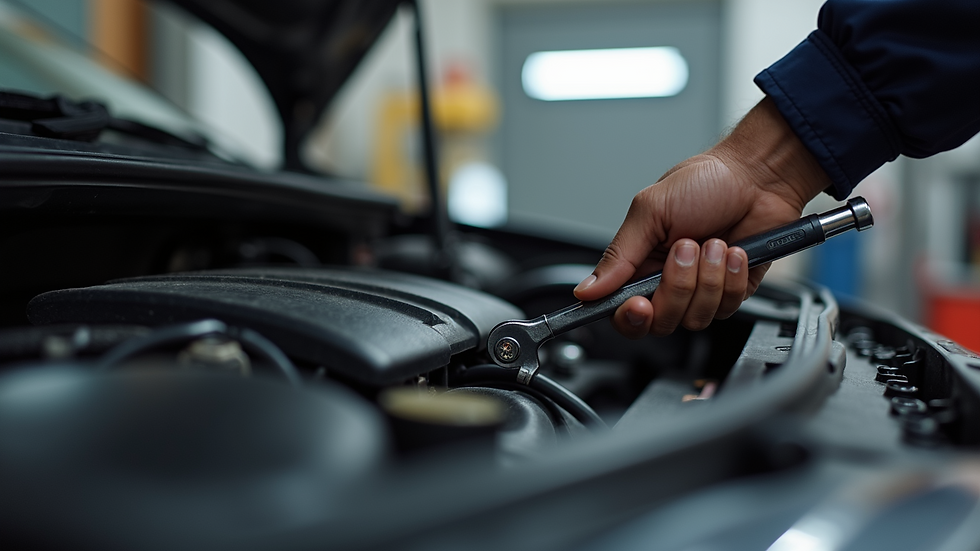Mastering Auto Repair: Essential Tips and Tricks for Beginners
- swarthytroll2022
- Jul 3
- 3 min read
Auto repair can seem daunting, especially for beginners. The thought of getting under the hood of a car can be intimidating. However, with the right knowledge and tools, anyone can learn to tackle basic repairs. This guide will provide you with essential tips and tricks to help you master auto repair, making it easier and more enjoyable.
Understanding the basics of auto repair is crucial. Whether you want to save money on repairs or simply enjoy working on your vehicle, knowing where to start is key. In this post, we will cover essential tools, common repairs, and helpful resources to get you started on your auto repair journey.
Essential Tools for Auto Repair
Before diving into repairs, it is important to have the right tools. Here are some must-have tools for any beginner:
Wrenches: A set of combination wrenches will help you tackle various nuts and bolts.
Screwdrivers: Both flathead and Phillips screwdrivers are essential for many tasks.
Pliers: Needle-nose pliers and regular pliers are useful for gripping and twisting.
Jack and Jack Stands: These are necessary for lifting your vehicle safely.
Oil Filter Wrench: This tool makes changing your oil filter much easier.
Having these tools on hand will make your repair tasks smoother and more efficient.
Basic Maintenance Tasks
Regular maintenance is key to keeping your vehicle running smoothly. Here are some basic tasks you can perform:
Oil Changes
Changing your oil is one of the simplest and most important maintenance tasks. Here’s how to do it:
Gather Supplies: You will need new oil, an oil filter, a wrench, and an oil catch pan.
Lift the Vehicle: Use a jack to lift the car and secure it with jack stands.
Drain Old Oil: Remove the oil drain plug and let the old oil drain into the catch pan.
Replace Oil Filter: Use the oil filter wrench to remove the old filter and install the new one.
Add New Oil: Replace the drain plug and add new oil through the oil filler cap.
Check Levels: Start the engine and check the oil level with the dipstick.
Tire Maintenance
Proper tire maintenance is crucial for safety and performance. Here are some tips:
Check Tire Pressure: Use a tire pressure gauge to ensure your tires are inflated to the recommended level.
Rotate Tires: Rotating your tires every 5,000 to 7,500 miles helps them wear evenly.
Inspect Tread Depth: Use the penny test to check tread depth. Insert a penny into the tread; if you can see all of Lincoln's head, it’s time for new tires.
Troubleshooting Common Issues
Sometimes, your vehicle may show signs of trouble. Here are some common issues and how to troubleshoot them:
Engine Won't Start
If your engine won’t start, consider these possibilities:
Dead Battery: Check if the battery is charged. If not, jump-start the car.
Fuel Issues: Ensure there is fuel in the tank. If the fuel gauge is broken, you may need to check the fuel pump.
Starter Problems: Listen for a clicking sound when turning the key. If you hear it, the starter may need replacement.
Overheating Engine
An overheating engine can lead to serious damage. Here’s what to do:
Check Coolant Levels: Make sure the coolant reservoir is full.
Inspect Hoses: Look for leaks or cracks in the hoses.
Thermostat Issues: If the thermostat is stuck, it may need replacement.
Learning Resources
To further enhance your skills, consider these resources:
Online Tutorials: Websites like YouTube have countless videos on auto repair topics.
Repair Manuals: Purchase a repair manual specific to your vehicle model for detailed instructions.
Local Classes: Many community colleges offer auto repair classes for beginners.
Safety First
Safety should always be your top priority when working on your vehicle. Here are some safety tips:
Wear Protective Gear: Use gloves and safety glasses to protect yourself.
Work in a Well-Ventilated Area: Ensure proper airflow to avoid inhaling harmful fumes.
Disconnect the Battery: Always disconnect the battery before working on electrical components.
Building Confidence
As you gain experience, your confidence will grow. Start with small tasks and gradually take on more complex repairs. Remember, mistakes are part of the learning process. Don’t be afraid to ask for help or consult resources when needed.
Final Thoughts
Mastering auto repair is a journey that requires patience and practice. By starting with the basics, investing in the right tools, and continuously learning, you can become proficient in auto repair.
With these essential tips and tricks, you are well on your way to becoming a skilled DIY mechanic. Embrace the challenges and enjoy the satisfaction that comes from fixing your vehicle. Happy repairing!




Commentaires